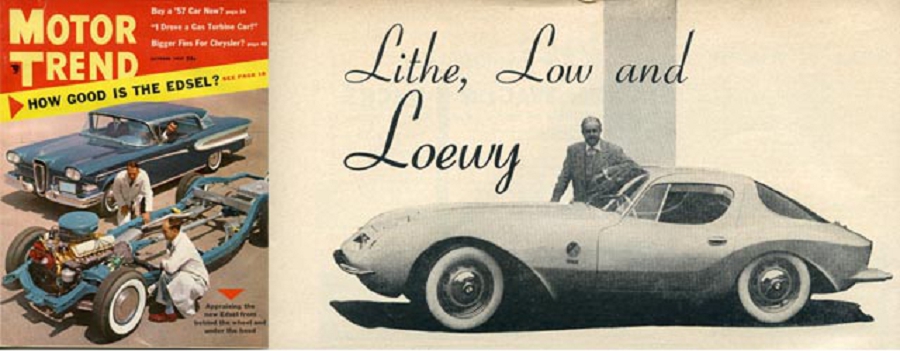
Hi Gang…
We’ve talked about Howard “Dutch” Darrin and his repeated use of fiberglass to create great designs and memorable one-off cars time and time again. But Raymond Loewy created some great designs for sports cars in the ’50s too – all leading up to Studebaker’s fiberglass Avanti.
But the story of the Avanti is for another day. Let’s look at an earlier car designed by Loewy – one that we believe was created in aluminum (we’re still researching the material used at this time) and finished in ’57.
Let’s see what Motor Trend had to say about Loewy’s BMW 507 sports car when it debuted.
Lithe, Low and Loewy
Motor Trend, October 1957
Daring designer Raymond E. Loewy has done it again – this time with a personal sports car representing “a return to fundamental automobile styling conceived for function instead of effect.” Starting with a 97.5 inch wheelbase BMW 507 chassis, Lowey had French builders Pichon and Parat construct a competition sports car with Gran Turismo characteristics.
Not intended for mass production, the car achieves a successful balance of safety and wind resistance factors. The reinforced chassis is banded by two square-section members which serve as profile around the windshield and the rear window and which are joined by two similar steel members over the doors, for maximum rigidity and protection.
Strategically placed interior padding and distinctive looking but highly functional bumpers add a further measure of safety unusual in sports cars. Other features include compound-curved windshield and electrically operated windows. Powered by a 150 horsepower V8 engine which reportedly can turn 0-60 in seven seconds, Loewy’s car promises performance to match its sleek appearance.
Summary:
Some have commented that a few of the design lines of this car later revealed themselves in the Avanti. To me, the use of the rectangle headlights looks futuristic for its time gang, and the rear bumper treatment seems quite unusual too. I think it’s quite a stylish car – especially for ’57.
Lots of interesting design elements here – much that we can appreciate for the era of its design.
Hope you enjoyed the story, and until next time…
Glass on gang…
Geoff
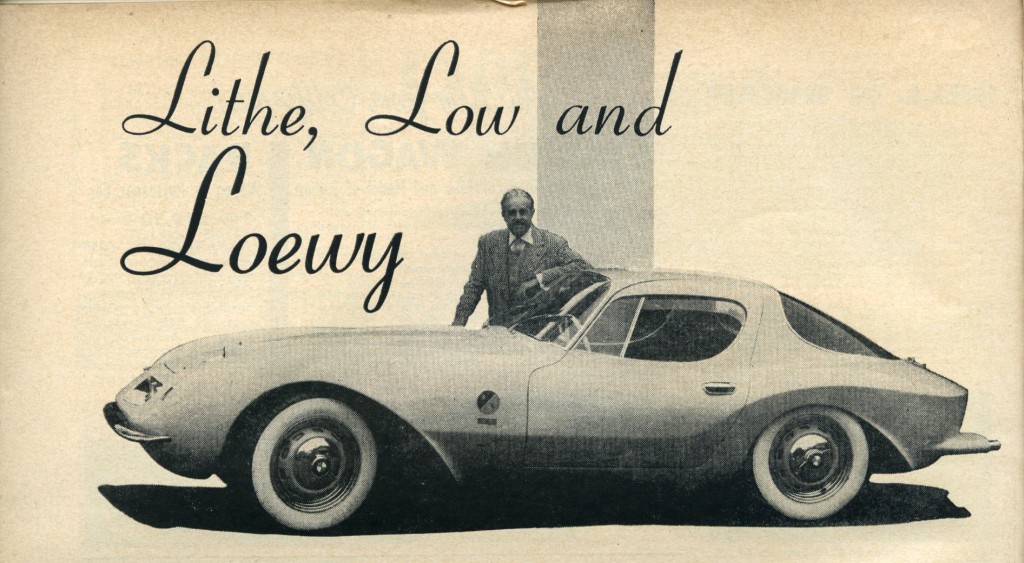
——————————————————————-
Click on the Images Below to View Larger Pictures
——————————————————————-
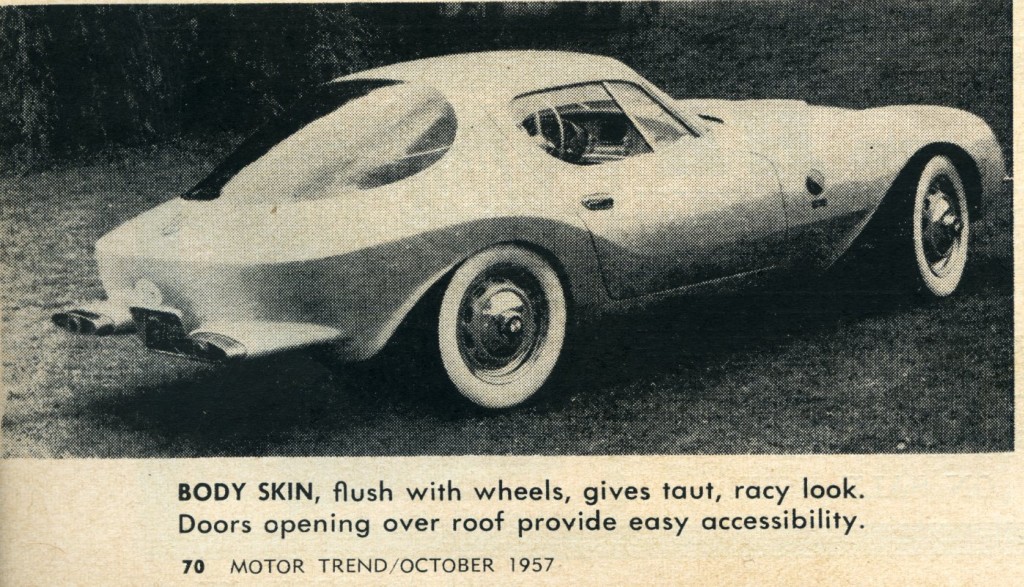
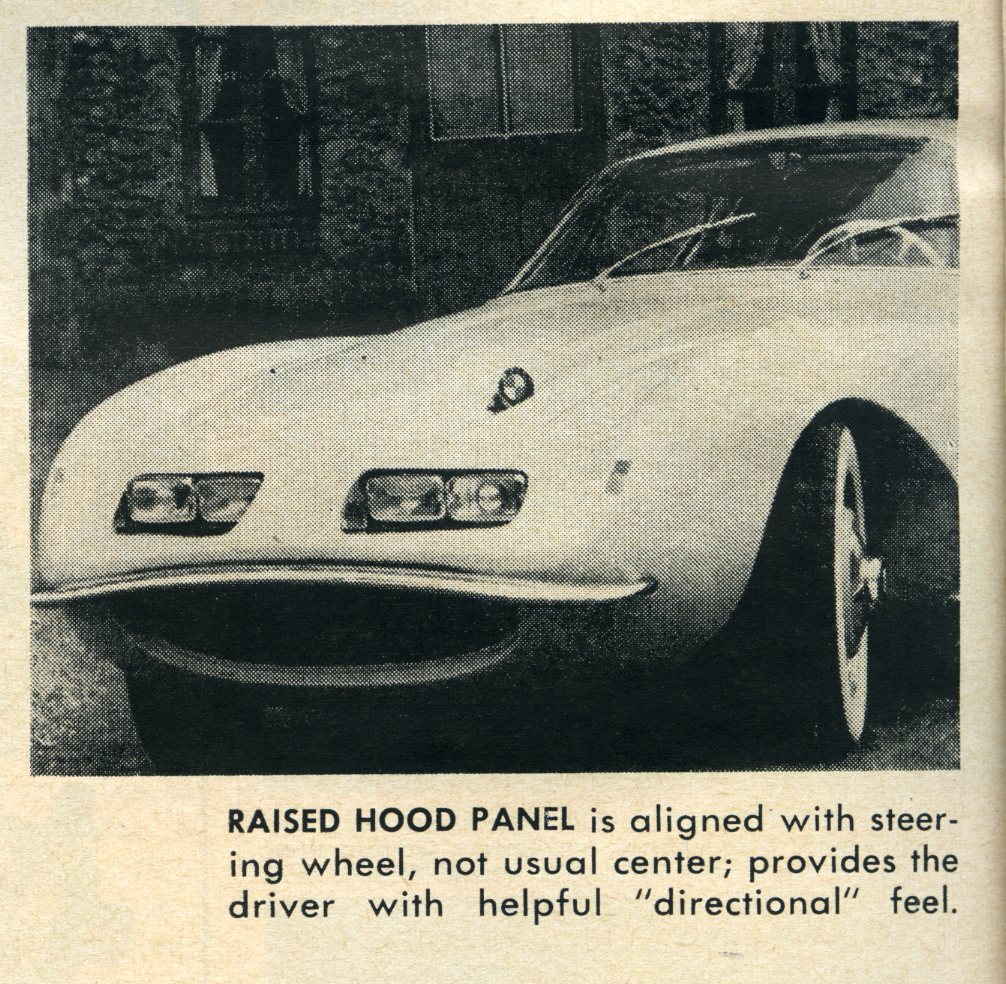

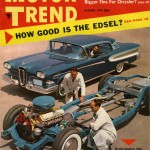
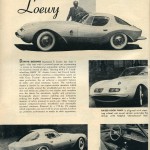
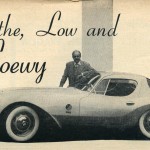
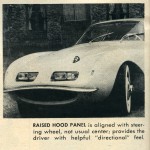
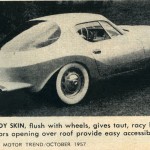
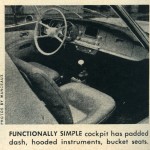
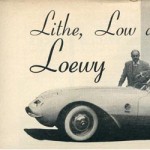
I am a big fan of the Cheetah and this car looks very similar especially in the windshield and doors along with the hood to body proportions.
The rear-end treatment looks much like our 1955 Victress C-2 and C-3 coupes (without the bumpers). This shape was suggested to us by a friend who described, with a hand-wave, an Italian car which I believe to have been a 1953 or ’54 Zagato-bodied Alpha Romeo, which I saw at Amelia Island several years ago. I never saw the picture, but loved the concept, and immediately started shaping plaster, without doing any drawings. A later Corvette series also has that style rear-end.
Geoff…this car is owned by the LA Natural History Museum…we had it stored in the basement of the Petersen for a while…now it’s in another warehouse, I think in OC.
Best.
Ken G.
Much of what financed Raymond Lowey was Studebaker. They had a small design staff and sub-contracted the bulk of the work to Lowey. His contract was a ‘golden parachute’ of the 1940s and 1950s. It was a cost-plus deal. They did a nice job on the 1940 to 1942 Studebakers. Some of the trim on the 2 1941 Continentals he had customized look like ideas sketched for the 1942 to 1944 Studebaler planning.
As of 1942, all car companies were closed. Lowey could keep designing for Studebaker as he was not the Studebaker Design VP like other companies had. Many very talented car designers hired on with Lowey as he was an Industrial Design Firm and not subject to the WWII civilian car shut down.
When my Art Center instructor, Joe Thompson was laid-off at Cadillac he was able to continue in his lifes profession with Lowey as were many other very talented guys.
Lowey’s costs to Studebaker got so high by the time Bob Bourke did the 1953 and Studebaker was in such bad financial shape , Brooks Stevens was brought in to lower design costs and add some new blood to the process.
The face lift Stevens did for the 1956 Hawk likely cost less than the 1955 up-date done by Lowey.
It is hard to reset ones mind to 1957, but I remember commenting that it looked like a fish with a mustache… Of course, he made this thing out of one of the prettiest cars of the era… Loewy pushed mid-1960s styling a half-decade early, but the details were odd and had the look as being afterthoughts…. In 1957, Americans were just getting used to tailfins……… In this period, many European design houses, even from the stylish-for-days Italians, were experimenting with examples at least as odd as this one – I remember a Ferrari with tail fins and open front fenders that showed the tires like a race car, but then they added some molded clear plastic “fenders” on top…. The Jetsons meet Jules Verne….
The 507 was just one of several cars that Loewy had designed and developed while working as an industrial designer. Loewy was not, by anyone’s description, a car designer. He was a magnificent orchestrator of talent however, and supreme showman. Among his carefully farmed talents he was also able to motivate Pichon et Parat in France to build many cars and prototypes for him. On the hopes of further earning business much like the Italian coachbuilders, Loewy was able to get cars built for him at little to no cost. He would purchase the base car (in this case a not-cheap BMW 507) and then retain the car as his own, later to be sold and all proceeds returned to his own bank account.
The three most notable of this era were the Lancia Lo-Ray-Mo, this 507 (now at the Petersen Museum in LA), and an E-type which recently sold at auction. All three of the cars exhibit much of the ideas Loewy would discuss with young Virgil Exner, Bob Bourke, and others who would quickly sketch up ideas to meet Loewy’s approval. Those sketches would be all that the coachbuilder would use to fabricate the full sized cars. There are two cases where only Loewy was involved directly with the design of his cars without the assistance of other designers – the 59 Loewy cadillac and his custom Lincoln Continental. Both cars clearly exhibit his style.
Many of the ideas in this car would indeed end up on the Avanti (the large backlight, the bladed front fenders and integrated turn indicators, the door cuts into the roofline, and the egg shaped wheel openings. But all of those features were managed with a great deal more sophistication when handled by the elegant mastery of Tom Kellog and the modeling skills of Bob Andrews and John Ebstein (the team of designers and developers on the avanti with Loewy).
While visually innovative, these Loewy concept cars were hardly influential to future cars. They did, however, establish professional confidence in the younger designers as they would see their work become fully realized under the guidance of Loewy and benefit at least peripherally by his enormous marketing machine.